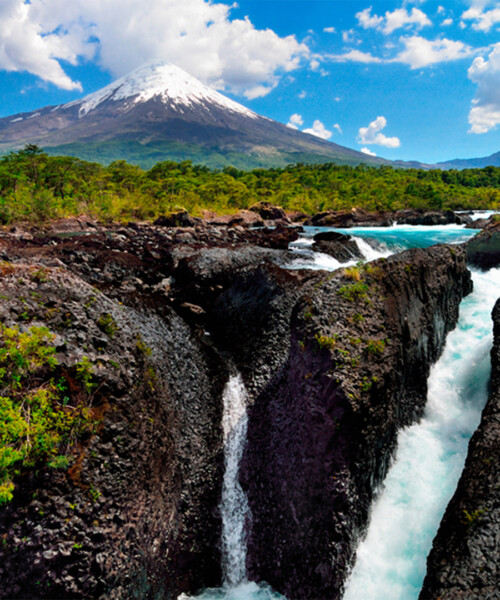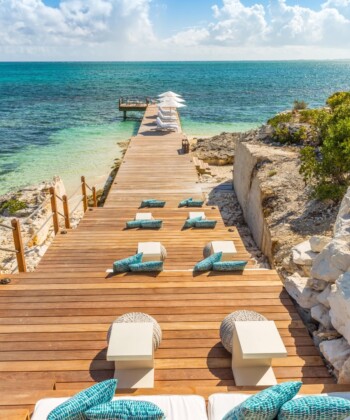I’ve had two real vacations in my adult life. The first was my honeymoon, when people didn’t want to bother me. The second was a trip to the wilds of Chile, when I didn’t let them.
It wasn’t just a lack of connectivity that afforded me the space. After all, if unplugging—emotionally, physically—were really as easy as being somewhere you can’t get cell service, we’d all relish the time in the depths of the gym locker room rather than racing outside to see what we’ve missed. Rather, it was the inescapable feeling of being so far away that enabled me to disconnect from that life, at least for a while. And that felt transformative—intoxicatingly so.
This is precisely the reason people travel to remote places, and why there are more of us doing it than ever before: riding camels in the Moroccan Sahara, hiking through the Ugandan mountains, communing with monks in Southeast Asia. It’s adventure we’re seeking, but also serenity. Silence. There was something about the vast nothingness I found in Chile, all the sounds I heard—but even more, the ones I didn’t—that made getting online, much less digging into a work-related e-mail or posting something to Facebook, almost obscene. Even when sneaking in an Instagram photo of the spectacularly empty stretches of sand or perfectly clear skies was possible, it felt like an unthinkable affront. There was a permission, an expectation, to go rogue.
Of course, going remote needn’t mean roughing it. Modern pursuit of far-flung adventure does not come at the cost of sleeping outdoors—or even sleeping on mediocre sheets—nor of forgoing your favorite Riesling, chilled to perfection. In most cases, you can get WiFi, if you insist. It also no longer means enduring a dogged, multi-part journey. For years, Chile has gone largely overlooked by those in search of a truly transformative experience—can any place on the same side of the world be far enough away? But for a small country—it’s more than 2,500 miles long but never more than 225 miles wide, with a total land mass about twice the size of the state of Montana—Chile offers a uniquely vast range of ways to put yourself blissfully off the grid.
A short flight from Santiago, Chile’s Atacama Desert is the driest desert in the world, and one of the hottest and oldest besides. It’s virtually lifeless in some parts, where not a single drop of rain has been recorded since recording began. In other parts, though, there are steamy thermal lakes and grassy gorges, the desert’s open secrets. In any case, there is plenty here to marvel at. What you won’t find: tour buses, crowds, much to do—beyond enjoying the beauty of the landscape during long hikes across parched rock, sandboarding down hilly dunes or simply sitting around admiring the view.
In recent years, the desert has welcomed a handful of luxury resorts to make all this easier and more comfortable. Though rustic in design, the Alto Atacama leaves no extravagance overlooked: There are Turkish baths, fire pits and perfectly-mixed pisco sours to enjoy while gazing at unobstructed views of sloping red rock mountains, salt flats, distant volcanoes. You will drink water from Chilean springs and eat desert-herb-infused ice cream and feel like the first people on earth ever to do so. Surrounding Inca and Atacameño ruins and petroglyphs date back thousands of years—thanks to the desert’s lack of moisture, which prevents rot, the area is a living archaeological museum—while high altitude, sparse rainfall and, well, nothing else for miles mean you really do seem to see more stars here than anywhere else.
On the other end of the spectrum and the other end of Chile—1,354 miles to the south of Atacama—Chiloé Island is lush, dense and evergreen, but similarly pristine. It’s a place where penguins gather and time has stood still. For many years, the island, off the coast of northern Patagonia, was shut off to all but the most committed explorers, who were willing to make a 17-hour bus or car ride from Santiago, followed by a ferry. In 2012, however, Chiloé finally welcomed a local airport. Not long afterward, it was followed by the stylish Refugia lodge, run by quite possibly the friendliest group of people in the Southern Hemisphere.
Chiloé Island is a place heavily shaped by myths, folklore and religion—it is known for its Jesuit churches, 16 of which are UNESCO World Heritage sites. It’s also been shaped by weather that, while often harsh, leads to an impossible greenness. The 12-room, light-filled hotel was built using local Chilote wood craftsmanship, with an eye towards always taking in some sort of breathtaking view: of the Andes, of the sea. The owners called on local artisans to create the wood furniture, artwork and blankets throughout the hotel; naturally, those cozy wool slippers in your room come courtesy of a local sheep. You’ll dine on fresh seafood and local meat, drink Chilean wines, explore the archipelago and its miles of unspoiled coastline in the hotel’s private boat and wonder why it took so long for this place to be discovered. Then you’ll wonder how you can keep it to yourself for as long as possible. Here’s how to make the most of your trip to Chile.
LAN Airlines offers non-stop flights between Santiago and Chiloe and Santiago and Calama, the nearest airport for travel to the Atacama desert. lan.com
Click through the gallery above to see more of Chile.
MORE:
Take a Dream Trip to the Edge of Nowhere in Fiji
Rediscovering Vietnam: A Regal Country Gets a New Life
Three Days on the Caribbean’s Most Secluded Island










































